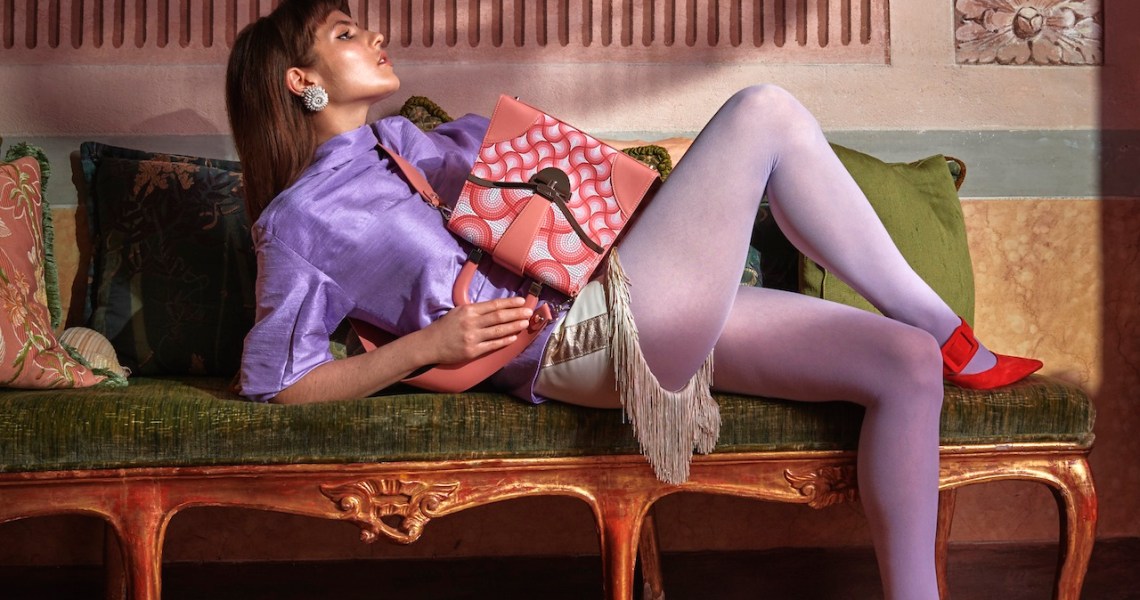Direct-to-consumer brands are popping up in nearly every sector, looking to play disruptor. But in luggage, there are relatively few DTC brands beyond Away making much of a splash.
A new brand, Ametti, is looking to fill some of that space, particularly in areas the founders perceive are not being served well by Away, like balancing a technological component with an affordable price tag.
For Tessa Horovitz, co-founder of Ametti, luggage brands were doing a good job of putting out affordable luggage that was of a reasonably good quality when she and co-founder Jessie Minikes began planning for the launch of Ametti later this year, but she felt there was a gap in terms of what the brands offered their customers. Particularly, she felt DTC brands like Away were creating luggage that was practical and utilitarian, but lacking in style, while luxury brands like Rimowa were making beautiful luggage that didn’t have many innovative perks. She wanted to create a brand that fell between the two extremes.
“There are a lot of brands that are very uniform and blend into the crowd,” Horovitz said. “They’re easy and practical, but they have no personality or feminine touch. We really want to bring back a sense of glamour and style to traveling, that’s less pure utilitarian and combines technology.”
Ametti’s luggage features a digital scale inside each bag that connects to a mobile app, telling customers exactly how much the bag weighs when packed. They also come with digital tools like a GPS tracker and a phone charger. The mobile app was initially developed outside the company by Ametti’s manufacturer, but in September when the brand launches, Ametti will take over operating the app. For comparison sake, Away has not neglected adding tech to its luggage, but so far that has been limited to an in-bag phone charger. The average price for Away suitcases is $250, Ametti’s start at $250.
But Away currently dominates the luggage market, making up 16% of the total market revenue, which puts it far ahead of its two closest competitors, Samsonite at 11% and Tumi at barely 2%.
The brand is still in pre-launch mode, though a small sample collection is available for sale on the brand’s online store. Ametti will be starting online-only, before exploring pop-ups and permanent stores, ideally inside airports and hotels. The goal for the first year is $1.5 million in revenue.
“There are two angles here,” Horovitz said. “The first one is the technology side of things: having everything connected to the app — the scale, the GPS, but also having content on the app like travel guides produced in-house by the brand’s full-time content editor. The second part is creating something really bold and feminine, not just gray and black and plain. Combining those two, I think, gives us the best of both worlds.”
Ametti, like Away with its handbags and rumored clothing line, has also sought to branch out beyond just luggage. The brand has a full line of handbags, clutches and passport holders in the works as well.
“The general issue with luggage, as with mattresses, is that it’s an infrequent purchase,” said Richie Siegel, founder of consumer advisory firm Loose Threads. “This is why Away and other brands have to expand into other related products: people are only buying a new suitcase every five to 10 years and/or if they have a bigger family. But product quality and innovation really matters, and hard-goods product development skills don’t always translate into soft-goods skills. There is opportunity outside of suitcases with travel products that are adjacent, better to use and more stylish. This is where Away has tried to expand, but its value prop is less compelling and there are mixed reviews about the products.”
But whether Ametti, or any other DTC luggage upstart, can truly serve as an Away competitor remains to be seen. Away recently became a billion dollar brand and has been planning a big expansion both internationally and within the U.S., with more retail stores and a more diversified product lineup on the way. And as an upstart brand, Ametti has significant cost challenges, since making a tech-enabled, high-quality piece of luggage does not come cheap.
“It’s always hard, because we want to make sure we are very practical while staying affordable,” Horovitz said. “As soon as you add electronics, it makes things very pricey, very quickly. This is a challenge because we had to teach our supplier that we didn’t want to skimp on the designs. We want leather, not nylon. This should be a luxury product. The hardest part of all this has been negotiating with manufacturers so we don’t overstock. We want to use the best factories, but it took a lot of work to convince them to do smaller collections for us, especially as a new brand.”




